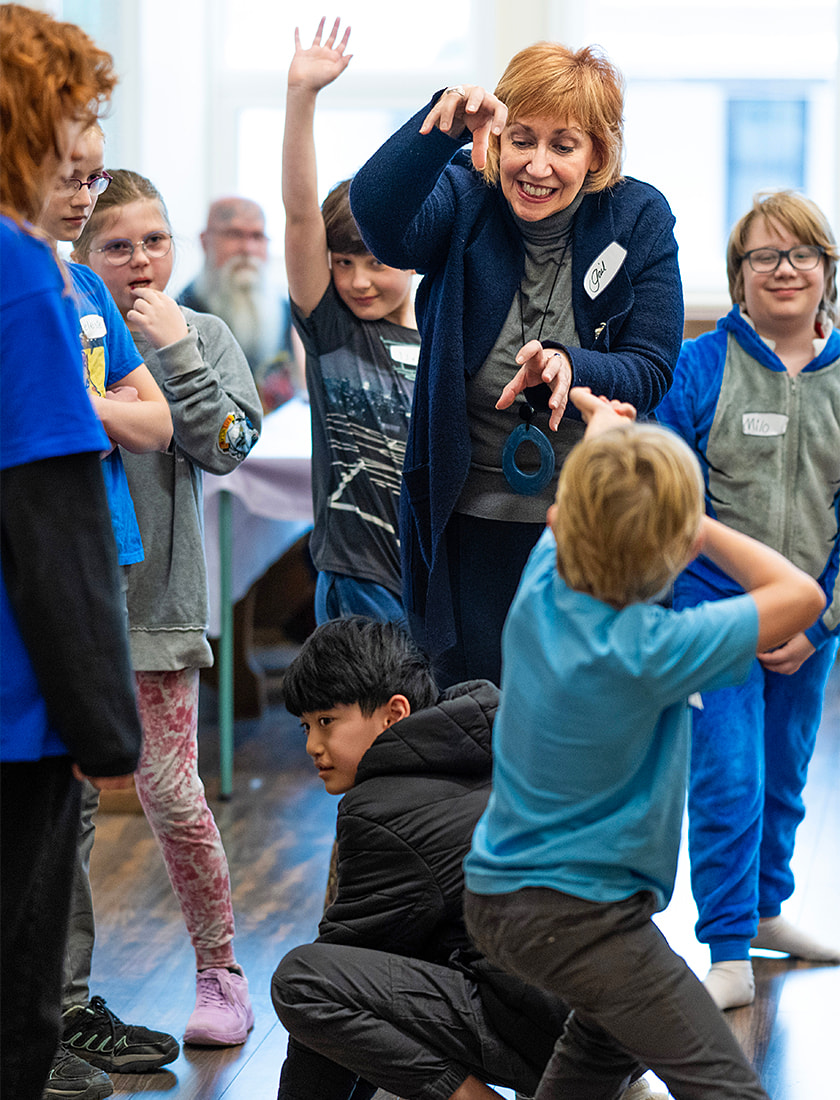We knew our grads were impressive, but a new survey that quantifies the impact of U of A alumni wowed even us. Grads contribute $250 billion to the global economy every year — and that’s just one of the many ways our grads enrich the world around us. Here we celebrate one of the people behind those numbers.
As a young adult, Gail Sidonie Šobat, ’83 BEd, ’91 MA, set her sights on acting. When she auditioned for university acting programs across the country and wasn’t accepted, she was crestfallen.
Undeterred, she devised a new plan: earn an education degree and teach K-12 while honing her acting in her spare time. It worked. Within a few years, Šobat was acting professionally. But something didn’t feel quite right.
“I missed teaching,” she says. “I thought, ‘Clearly, I am meant to work with kids.’” The backup plan became a passion and has remained a constant throughout her eclectic career of performing arts (acting and singing), writing (she has published 12 books) and public speaking (as far afield as Turkey, Qatar and Vietnam).
But nothing has tested the limits of Šobat’s creativity and tenacity like YouthWrite. The arts organization, which grew out of a summer writing camp operated by the Writers’ Guild of Alberta, offers writing camps, workshops and events for young people. Šobat began by co-ordinating the camp in 1996 and ended up running it as an independent organization in 2010.
In the early years, she and her partner had to use their own money to help fund the camp, but the non-profit venture eventually became sustainable. Now YouthWrite offers programming throughout the year in fiction, poetry, comics, social media, online role-playing and other forms of new media. It also spawned the Spoken Word Youth Choir, a spoken word troupe that performs individually and as a group for charitable and educational events.
“At a time when I was questioning my worth, YouthWrite taught me my voice was important and valued,” says Lauren Seal, ’13 BA, who attended the camp from 2005 to 2009. Seal is a writer, librarian and former poet laureate of St. Albert, Alta., whose debut YA novel-in-verse, Light Enough to Float, will be published this year.
“My entire life is based around words, books, and poetry. I truly do not know who I would be if I hadn't gone to YouthWrite.”

We at New Trail welcome your comments. Robust debate and criticism are encouraged, provided it is respectful. We reserve the right to reject comments, images or links that attack ethnicity, nationality, religion, gender or sexual orientation; that include offensive language, threats, spam; are fraudulent or defamatory; infringe on copyright or trademarks; and that just generally aren’t very nice. Discussion is monitored and violation of these guidelines will result in comments being disabled.